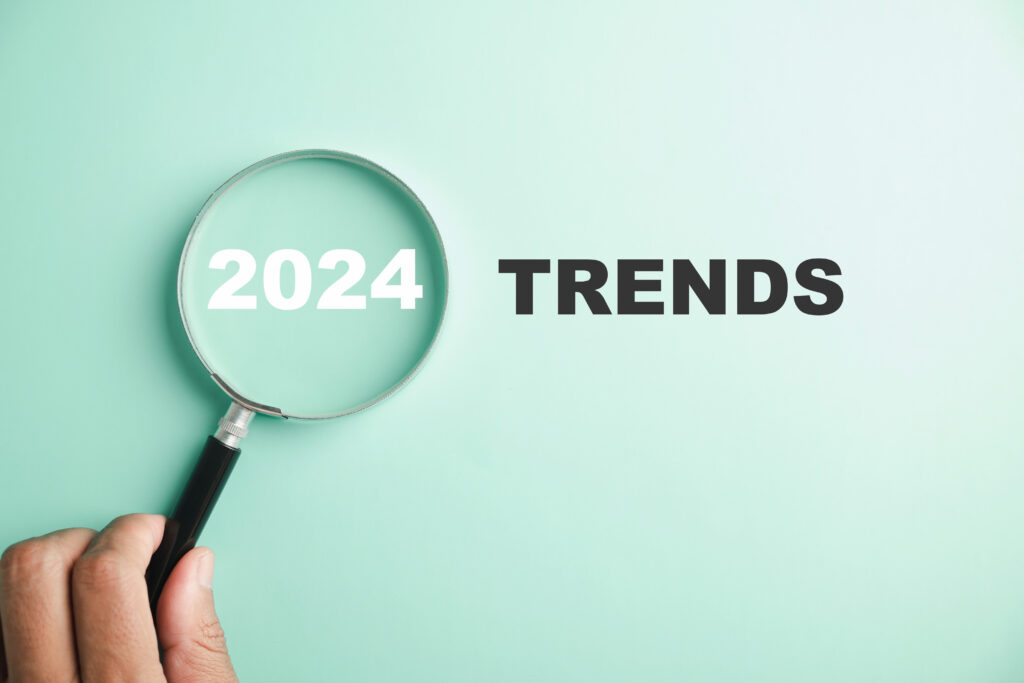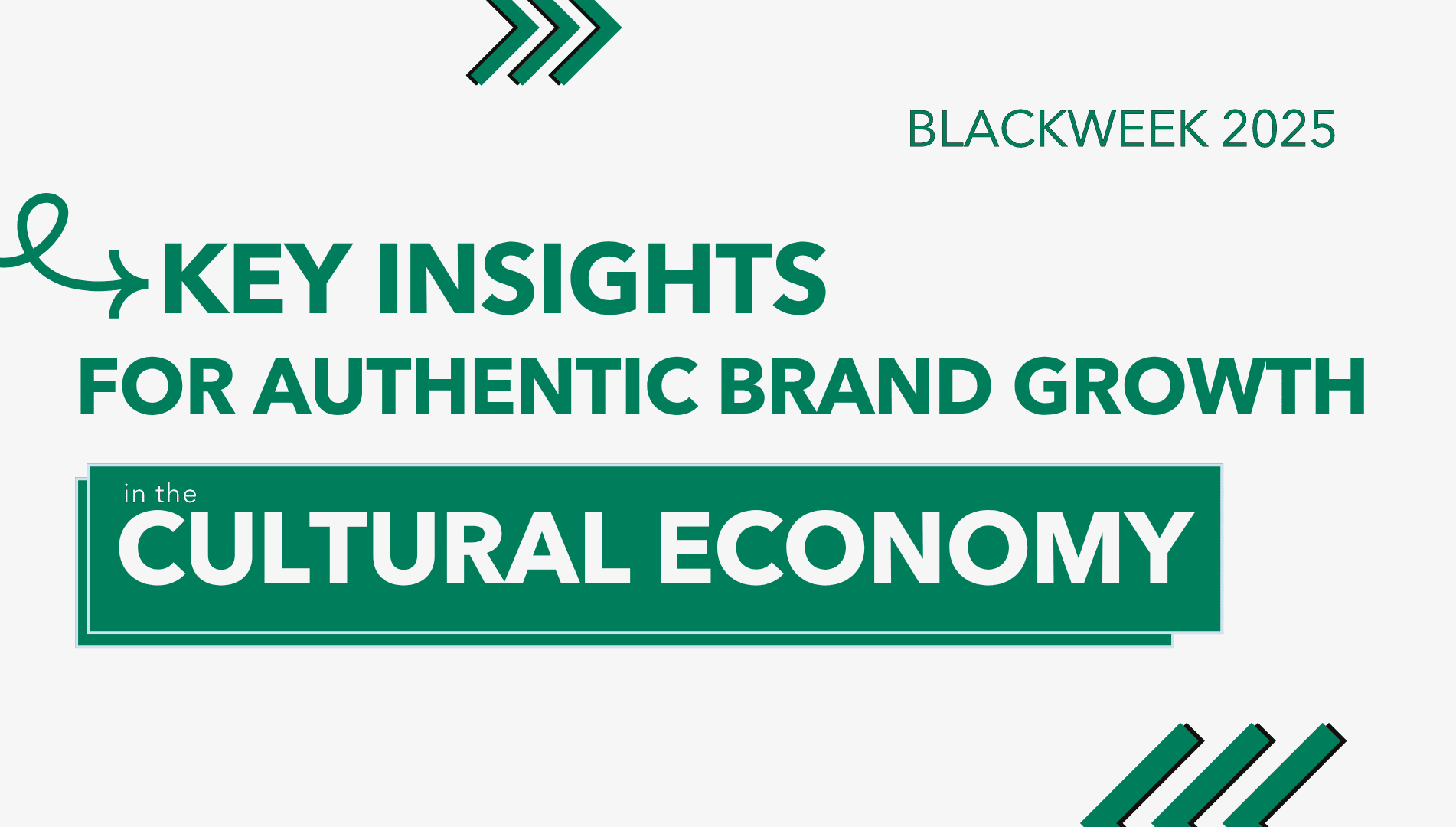Major shifts in culture, tech, politics, and the economy set the stage for a year that will test the foresight, endurance, and creativity of communications professionals.

Brands have an unabashed permission to market, authentically.
From a Barbie pink takeover to Frito-Lay inspiring a new generation of mullet bearers, consumers are not just accepting of great brand marketing, they’re craving it! We’re witnessing the revitalization of brands who have figured out how to go beyond “jumping on trends.” These brands are birthing trends with cultural-led creative that feels authentic to the brand and right for the times.
→ The Bottom Line: Answer the call for culture-led creative and own your role in shaping trends. Proceed bravely. No movement was ever created by following another’s lead. Lead with authenticity. Take cues from your advocates and critics alike to ensure your brand shows aligned with who they will permit you to be.
AI is the latest SEO challenge.
As users get more comfortable with AI-generated search answers and the feature becomes more prevalent in SERPs (search engine results pages), owning the first page of search is no longer enough for brands to feel confident in narrative ownership.
→ The Bottom Line: With most generative AI tools using “consensus” among their input sources as a strongly weighted factor influencing how answers are generated, ensuring the desired version of your brand story is published broadly across owned and credible third-party sites becomes even more important.
Misinformation abounds.
Widespread use and availability of generative AI tools for the average internet user will lower the bar for creating and publishing content that appears informed and credible. Couple this with an anticipated rise in content from bad actors intent on steering the results of this year’s US election and 2024 is sure to be ripe with reputation management challenges for companies and brands.
→ The Bottom Line: Communicators should review their monitoring practices to ensure issues are caught early. Companies in industries that are likely to be a target of or at higher risk for political or cultural/social issues association should also consider scenario planning and simulations to prepare teams for quick action should such issues arise.
Data Journalism grows.
What began in the political news sphere has morphed into much more today – news media now fact-checks internet hoaxes, social media memes, medical information, law enforcement and AI created content, among others. And as major news outlets aim to fight the flood of misinformation going into 2024, data journalism and fact-checking will become an even more critical part of the newsroom.
→ The Bottom Line: Brands should monitor social channels where misinformation can arise and watch for crossover into earned media coverage, course correcting media when needed. Brands should also examine what first party data they can share with media to inform their reporting and feed their hunger for data-backed storytelling.
The workplace power dynamic shifts again.
Companies have reclaimed their power in the employer-employee relationship, buoyed by last year’s economic volatility, significant layoffs, and return-to-office mandates.
Accompanying this strained relationship, employee engagement levels have fallen substantially, and studies show that Americans are unhappier at work than they have been in years. This reality has employers acutely aware of the delicate balance they are facing as they navigate demanding business goals while prioritizing employee engagement, purpose, and wellbeing.
→ The Bottom Line: Communicators play a critical role in connecting employees to each other, to the company, to wellbeing resources, and to an employee’s own purpose — the greater role they are fulfilling in society as either a corporate or frontline employee. Consider how an inside out approach with a mix of employee listening, empathetic leadership communication, compelling internal brand storytelling, and robust employee ambassador program can work together to improve engagement.
News media doubles down on community engagement.
Local and national publications are putting more emphasis on their community engagement (CE) divisions, which serve as a bridge between the newsroom and the audience, incorporating community members’ insights into news coverage. Differing from local beat reporters, CE reporters tailor coverage to the needs of the communities they cover, investigating and addressing deep systemic issues within communities. They are focused on fostering conversations, sharing resources, and discussing solutions within the community.
→ The Bottom Line: As publications take a deeper look into new platforms and avenues to engage their audiences, especially going into an election year, brands should look for opportunities to engage CE reporters who are responsible for bringing journalists closer to their audience by reimagining storytelling forms and distribution platforms and meeting the information needs of readers.
DEI and other social stances go internal.
In the face of cancel-culture, mounting pressure to prove progress, and risk of lawsuits, boycotts, and brands getting caught in political crossfire, companies have started to soften their external communications on social and culture issues. Some brands have gone as far to retitle recently minted DE&I leaders, rename programs to remove any reference to the terms “diversity,” “equity” and/or “inclusion” and move all DE&I communications to internal channels. At the same time, amidst a rise in antisemitism and islamophobia, and an election year that will certainly highlight social issues, the demand for DE&I efforts has never been greater.
→ The Bottom Line: Empathy and authenticity remain the north star coupled with the need to maintain an ongoing pulse of the DE&I environment. Communicators should always consider the message and channel. Be inclusive, neutral, and apolitical while staying true to the brand ethos and permission space. All communications in the DE&I space will be under more intense scrutiny – from internal and external audiences – and may require communications leaders to partner across other parts of the organization (i.e., government affairs, internal communications, legal) to craft and evaluate messaging and brand actions.
Leaders prioritize connection through candid, humanizing communications.
In a volatile and divisive economic and social landscape, guiding principles for executive communications foster confidence and maintain trust with key stakeholders – most importantly, employees. As in 2023, a close partnership between CEOs and their communications leaders will be key to enhancing a company’s reputation and avoiding pitfalls.
→ The Bottom Line: Internal and external are no longer separate arenas and execs must show up consistently no matter the channel. Executive social is becoming more crowded and those who want to break through as engagement plummets on X and LinkedIn leans harder into their thought-leadership ad model will need to offer real value to audiences. Prioritize thought-provoking points-of-view over standard company updates and consider diversifying the executive’s social presence to platforms like Instagram, Discord, or (in healthcare) Doximity.
Winning with Gen-Z requires more than a TikTok strategy.
Ask most brands what their strategy is to engage Gen-Z and you’ll likely hear TikTok listed as a critical channel but a Q4 2023 poll of Gen-Zers suggest putting all your Gen-Z eggs in the TikTok basket is a major mistake. While 78% of Gen-Z reports having a TikTok account, 92% of them are using YouTube regularly. Last year, YouTube surpassed Netflix as Gen-Z’s preferred video streaming platform and Gen-Zers trust YouTube more, with their trust for TikTok mirroring that of Facebook.
→ The Bottom Line: It’s time for brands to diversify their channel strategies targeting Gen-Z. The generation whose buying power and social-political influence is growing by the day is looking for more than short-form entertainment from brands. They are searching and congregating online around interests and issues that matter to them, seeking deeper knowledge and connection than they can get in a feed that moves at the speed of TikTok.



